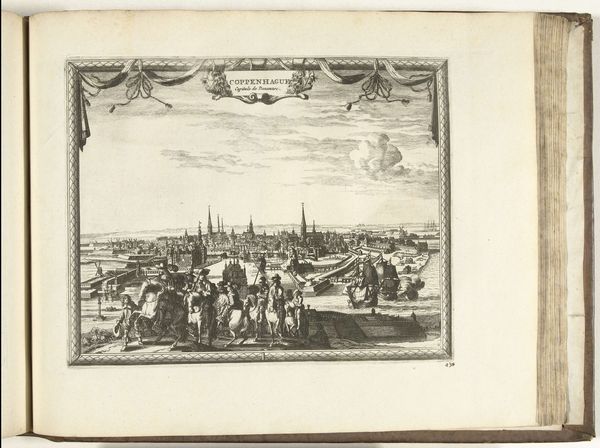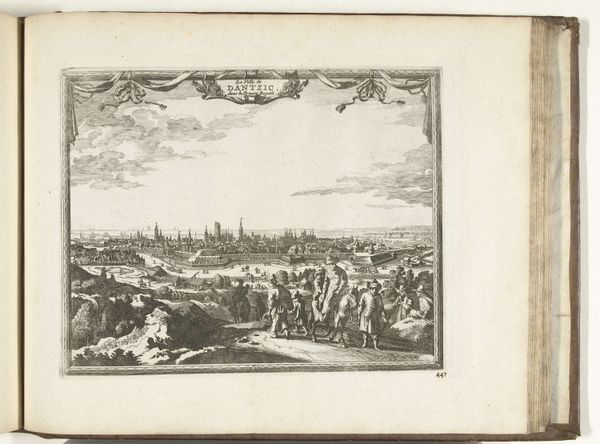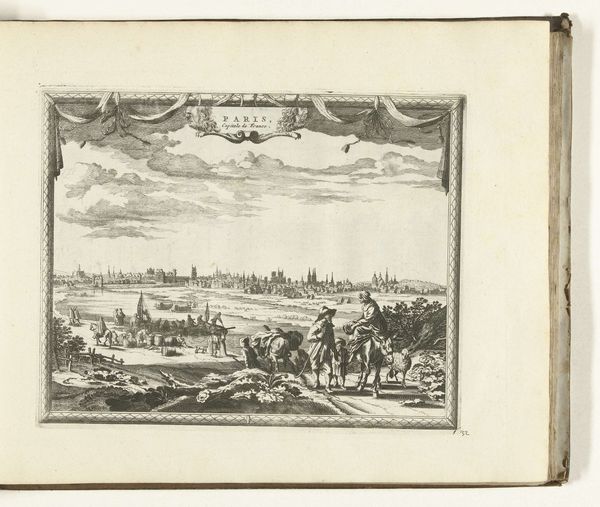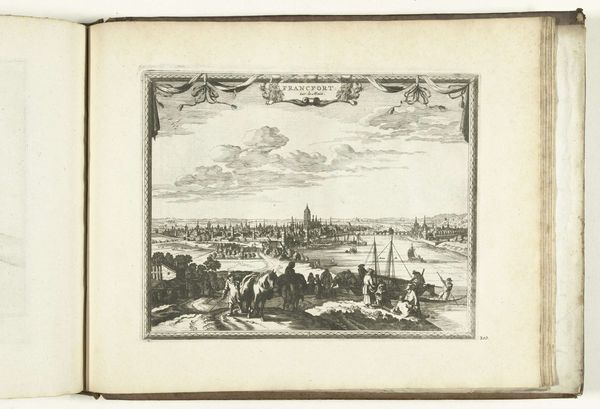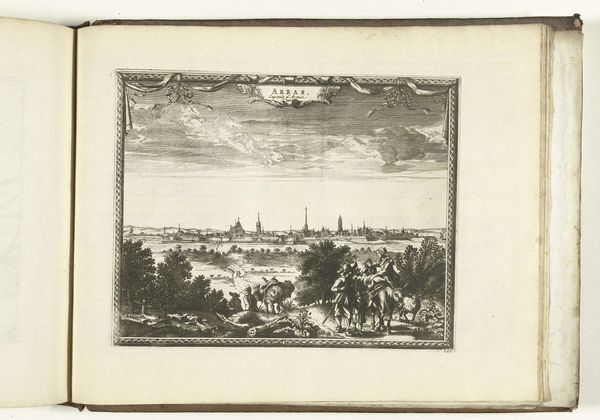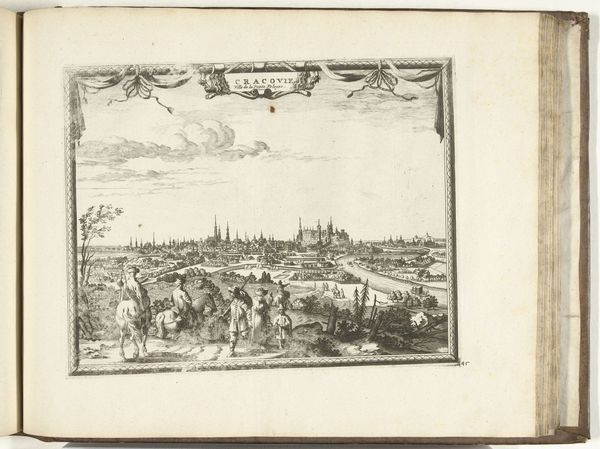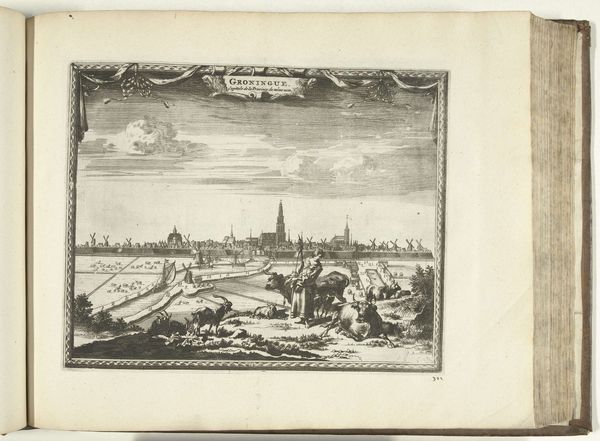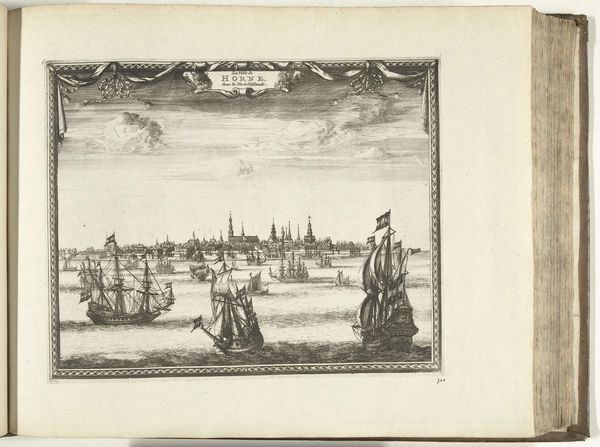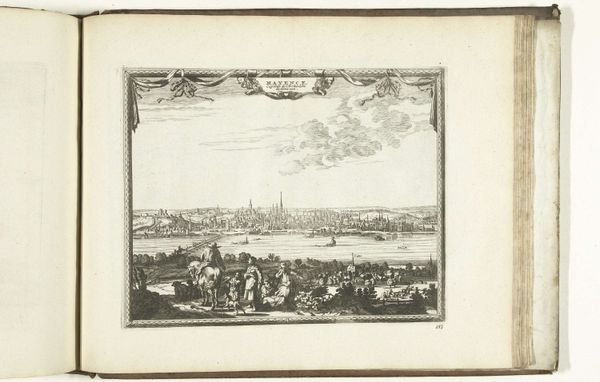
print, engraving
#
baroque
# print
#
landscape
#
cityscape
#
engraving
#
realism
Dimensions: height 220 mm, width 273 mm
Copyright: Rijks Museum: Open Domain
This print, titled "View of Stockholm," was made in 1726 by an anonymous artist. It is an etching on paper. The distinct character of an etching comes from the way it's made. First, the entire metal plate would have been covered with a waxy, acid-resistant coating. The artist then draws through this coating with a sharp needle, exposing the metal underneath. When the plate is dipped in acid, the exposed lines are eaten away, creating grooves. The longer the acid bath, the deeper the lines. The plate is then inked, and the surface wiped clean, leaving ink only in the etched lines. Finally, damp paper is laid on the plate, and run through a press, transferring the ink to the paper. The result is a print with a delicate, linear quality. The technique allowed for the relatively easy reproduction of images, fueling the spread of information and visual culture. It democratized art, making views of cities like Stockholm accessible to a wider audience. This print, with its meticulous detail, offers a fascinating glimpse into the social and economic landscape of the time.
Comments
No comments
Be the first to comment and join the conversation on the ultimate creative platform.


